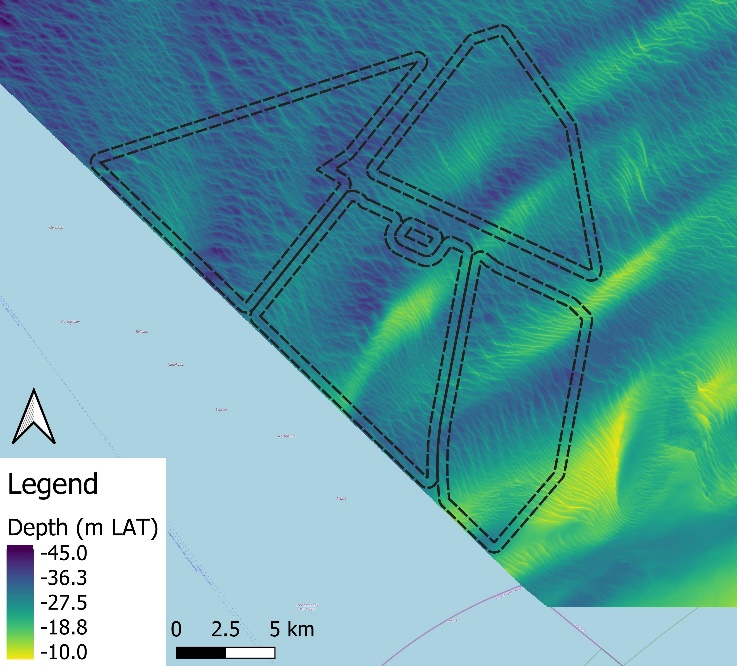E. De Borger1*, J.H. Damveld2, B.W. Borsje2, S.J.M.H. Hulscher2, K. Soetaert1
1 NIOZ
2 University of Twente
*corresponding author:
Introduction
In the coastal North Sea (NS), tidal forces cause the formation sandwaves, bedform structures of up to 10 meters in height and hundreds of meters long, which migrate several meters per year. Variations in physical parameters and food availability along these bedforms provide a high heterogeneity of habitats on a small spatial scale (i.e. the length of the sandwaves), and thus sandwaves house a surprisingly high amount of species (Damveld et al, 2018). The construction of offshore windfarms (OWFs) in areas where these bedforms are present, as is planned in the Dutch sector of the NS, will lead to cascading effects both during the construction phase (immediate impact) and the operational phase through alterations of local currents and sediment transport (chronic impact) (Rivier et al., 2016). In turn, migrating bedforms might lay bare the power cables present in OWFs.
The NWA project Footprint
In Footprint we aim to study and model this interplay between dynamic bedforms and hard structures, as this has both economic and ecosystemic relevance. In order to learn more about the interactions between OWFs and their environment, a field sampling campaign around the Dutch-Belgian OWF aggregation on either side of the border will take place come summer 2022 (Figure 1). In this campaign three research vessels will collaborate to study the hydrodynamic patterns, water column suspended matter characteristics, and sediment oxygen consumption, in and around the OWFs, and on the sandwave fields present in this area. This data will eventually be used to create realistic models of OWFs in a sandwave setting.

Figure 1: Bathymetric chart of the Borssele OWF area near the Dutch-Belgian border, location of the 2022 summer sampling campaign in the Footprint project.
References
Damveld, J. H., van der Reijden, K. J., Cheng, C., Koop, L., Haaksma, L. R., Walsh, C. A. J., et al. (2018). Video transects reveal that tidal sand waves affect the spatial distribution of benthic organisms and sand ripples. Geophysical Research Letters,45, 11,837–11,846
Damveld, J. H., van der Reijden, K. J., Cheng, C., Koop, L., Haaksma, L. R., Walsh, C. A. J., et al. (2018). Video transects reveal that tidal sand waves affect the spatial distribution of benthic organisms and sand ripples. Geophysical Research Letters 45. https://doi.org/10.1029/2018GL079858
Aurélie Rivier, Anne-Claire Bennis, Grégory Pinon, Vanessa Magar, Markus Gross. (2016) Parameterization of wind turbine impacts on hydrodynamics and sediment transport. Ocean Dynamics,, 50, https://doi.org/10.1007/s10236-016-0983-6
I. Surname1*, F.N. Another-Surname2 , Y. Next-Surname2
1 University Name, Country; 2 Organization Name, Country
* Corresponding author: mail.name@organization.org


